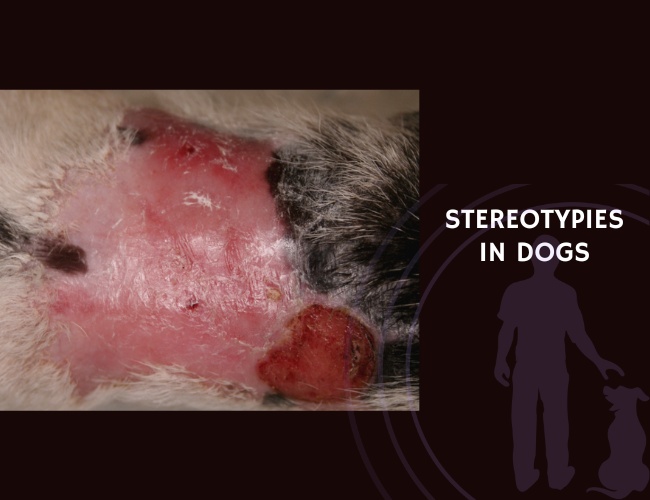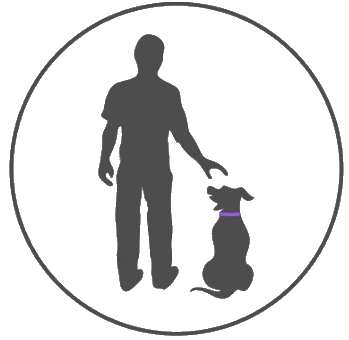Understanding Stereotypies in Dogs
Defining Stereotypies as Repetitive, Apparently Functionless Behaviors in Animals
When observing our canine companions, we might sometimes notice behaviors that seem unusual or out of context. These are known as stereotypies: repetitive actions that appear to serve no clear purpose. Researchers like Leuscher et al. (1991) have investigated these patterns, suggesting while they may seem functionless, some could have underlying functional aspects. It’s crucial to recognize these behaviors as potential indicators of welfare concerns within an animal’s environment.Understanding stereotypies in dogs is crucial for both veterinarians and pet owners, as these behaviors can be indicative of underlying issues that need to be addressed. Stereotypies can encompass a wide range of repetitive behaviors such as pacing, spinning, tail chasing, excessive licking, and chewing on objects (or themselves). These behaviors can initially appear to be harmless quirks, but they often signify more profound problems regarding the animal’s environment, mental health, or physical well-being.
Origins and Causes
The root causes of stereotypic behaviors in dogs are varied and can include:
– **Environmental Stressors:** Lack of stimulation, isolation, or confinement in a small space can lead to boredom and frustration, prompting stereotypic behaviors.
– **Anxiety and Fear:** Stressful situations, past trauma, or separation anxiety can manifest in repetitive behaviors as coping mechanisms.
– **Medical Issues:** Sometimes, stereotypies are symptomatic of underlying medical conditions. For example, excessive licking or biting at the body might indicate pain, allergies, or other health concerns.
– **Genetic Predisposition:** Certain breeds or individuals may be more prone to developing stereotypies due to genetic factors.
Functional Aspects
The functional aspects of stereotypic behaviors in dogs, while often considered undesirable or problematic, can provide insights into the animals’ needs and well-being. Understanding these aspects can help in developing strategies for intervention and management. Here are some functional perspectives on canine stereotypies:
1. **Coping Mechanisms:** Stereotypic behaviors can serve as coping mechanisms for dogs facing uncomfortable situations or emotions. Repetitive behaviors may help them manage stress, anxiety, or boredom by providing a sense of comfort or self-soothing.
2. **Communication Tools:** Dogs may use stereotypic behaviors to communicate their needs or discomfort to their caregivers. For instance, a dog that persistently paces or vocalizes when left alone could be indicating separation anxiety or the need for more social interaction.
3. **Displacement Activities:** In situations where a dog is conflicted or frustrated (e.g., wanting to approach something but feeling scared), they might display stereotypic behaviors as displacement activities. These behaviors occur because the energy from the emotional state needs an outlet, leading to seemingly unrelated actions like spinning or tail-chasing.
4. **Self-Stimulation:** In environments lacking sufficient physical or mental stimulation, dogs may engage in stereotypic behaviors simply to entertain themselves or to stimulate theirminds. This can include repetitive pacing, spinning, or tail-chasing. Some dogs might also engage in excessive licking, chewing, or biting at themselves when they are under-stimulated mentally and physically. These behaviors can sometimes lead to injuries or health problems if not addressed. Providing adequate physical exercise, mental stimulation through training, puzzles, play, and interaction, as well as safe toys, can help prevent or reduce these behaviors by satisfying the dog’s need for stimulation and engagement.
Discussing Examples of Stereotypies in Dogs
- Flank Sucking: This is where a dog persistently sucks on its flank area, which can lead to skin irritation or even infection.
- Chewing the Feet: Dogs may obsessively chew their paws due to various reasons including anxiety or compulsive disorders.
- Self-Scratching: Excessive scratching without a medical cause can be a sign of distress or boredom.
- Tail Chasing: Often perceived as playful, tail chasing can become obsessive and is a common stereotypic behavior in dogs.
Exploring the Potential Impact of Stereotypies on Dogs
The impact of such behaviors on a dog’s well-being cannot be overstated. Beyond the immediate physical harm, like self-mutilation, these actions can signal deeper mental health issues. They may stem from stress, frustration, or lack of stimulation and can significantly diminish a dog’s quality of life if not properly managed. Recognizing these signs early is key to providing the necessary care and intervention for our furry friends.
Classification of Stereotypies in Dogs
To further our understanding of repetitive behaviors in our canine companions, it is vital to classify stereotypies. These classifications help us comprehend the vast range of actions and their potential impact on a dog’s well-being. Let’s delve into these categories and exemplify each to paint a clearer picture of the breadth and depth of stereotypies observed in dogs.
1. **Oral Stereotypies**: These include behaviors primarily involving the mouth such as excessive licking of surfaces (ELS) or even air snapping. Dogs might lick floors, walls, or air, often in a trance-like state. This category extends to the previously mentioned flank sucking and chewing the feet, showcasing an obsessive focus on using the mouth or engaging in oral activities beyond normal behavior.
2. **Locomotor Stereotypies**: This classification encompasses repetitive movements that seem to serve no purpose, such as tail chasing, pacing back and forth, or circling in an enclosure. Locomotor stereotypies might indicate an animal trying to cope with a restricted environment or lack of exercise. Tail chasing is one of the most visible forms of this stereotype, especially in breeds like Bull Terriers and German Shepherds.
3. **Vocal Stereotypies**: Repetitive barking or howling without an apparent trigger falls under vocal stereotypies. Unlike communication barks or howls responding to external stimuli, these sounds are often monotonous and lack variation, signaling a potential underlying issue like anxiety, boredom, or other stress-related factors.
Grooming Behaviors
Dogs often engage in grooming as part of their natural behavior. However, when grooming becomes excessive, such as non-stop licking or chewing of feet and nails, it can signify a stereotypic behavior. These actions can lead to physical issues like acral lick dermatitis, a condition resulting from incessant licking.
Eating and Drinking Behaviors
- Polyphagia (excessive eating)
- Polydipsia (excessive drinking)
- Eating non-food items like gravel or dirt
When taken to extremes, these eating and drinking behaviors may hint at underlying health or psychological issues needing attention.
Locomotor Actions
Continuous movement-related behaviors are also forms of stereotypies. Examples include:
- Circling or whirling around aimlessly
- Running back and forth along a fence line
- Jumping in place or other repetitive movements
These actions could reflect environmental or social deficiencies in a dog’s life.
Neurotic Actions
- Self-mutilation like vicious biting of their own feet or tail
- Unpredictable aggression towards people or animals
Neurotic stereotypies often require immediate intervention, as they can pose a danger to both the dog and its human counterparts.
The implications of different types of stereotypies on a dog’s quality of life cannot be understated. For instance, grooming behaviors, while seemingly benign, can escalate to the point of self-harm. Eating and drinking compulsively might indicate an attempt to alleviate stress or boredom, potentially leading to nutritional imbalances or gastrointestinal issues.
Locomotor stereotypes might suggest an excess of energy or frustration, and they can lead to the dog injuring itself or becoming increasingly agitated. Neurotic actions, perhaps the most distressing of all, can cause significant harm and distress, signaling deep-seated anxiety or psychological trauma.
Understanding these classifications allows for better recognition of behaviors that may otherwise be overlooked as mere quirks. Early identification and intervention are crucial for managing these behaviors effectively, ensuring our dogs lead happy, healthy lives. It opens up a dialogue about the importance of mental health in dogs and encourages owners to seek professional advice should they notice such patterns emerging.
In the next section, we’ll explore factors influencing the development of these stereotypies, shedding light on the root causes and what measures can be taken to prevent them.
Factors Influencing Stereotypies in Dogs
Understanding the causal factors contributing to the development of stereotypies in dogs is a critical step in addressing these unwanted behaviors. A major factor is environmental control deficiency, which refers to the lack of ability for an animal to influence its own environment. Dogs, much like their wild counterparts, have an innate need to explore, hunt, and socialize. When these needs are not met, they may develop repetitive behaviors as a form of coping mechanism. Inadequate social interaction, such as isolation or insufficient time with humans or other dogs, can exacerbate this issue, leading to an increase in stereotypic behaviors.
Poor environmental conditions play a significant role in the development of stereotypies in both farm and companion animals. Confinement, lack of stimulation, or overly repetitive routines can trigger these behaviors. For example, a dog that spends excessive amounts of time alone without toys or activities might start tail chasing or excessive licking as a way to cope with boredom or anxiety.
These behaviors are not only concerning for the well-being of the animals but also present economic concerns for farmers. Stereotypies can lead to injuries or illnesses that require veterinary care, reducing the overall productivity of working or farm dogs. Additionally, in some cases, these behaviors can make animals unsuitable for their intended roles, leading to financial losses. It becomes essential for those involved in the care of animals, including farmers and pet owners, to consult with animal behaviorists or veterinarians to address the root causes of stereotypies and implement strategies to prevent them.
Environmental Control Deficiency and Social Interaction
- Lack of environmental control: Dogs may develop repetitive behaviors due to an inability to influence their surroundings.
- Inadequate social interaction: Isolation or minimal contact with other dogs or people can lead to an increase in stereotypic behaviors.
The Role of Poor Environmental Conditions
- Confinement and lack of stimulation can trigger stereotypic behaviors such as tail chasing or excessive licking.
- Repetitive routines without variety can also contribute to the development of these behaviors in dogs.
Economic Impact and Consultation Needs
- Stereotypies can cause injuries or illnesses in dogs, leading to increased veterinary costs and potential productivity losses for working or farm dogs.
- Consulting with professionals to address underlying causes is crucial for the welfare of the animals and the economic viability of farming operations.
Controversies and Debates Surrounding Stereotypies in Dogs
Function or Pathology: The Nature of Canine Stereotypies
In seeking to understand stereotypies in dogs, a principal debate emerges: do these repetitive behaviors serve as a coping mechanism for stress, or are they indicators of underlying pathological issues? This dichotomy is not easily resolved, as evidence can be found supporting both interpretations. On one hand, some researchers argue that stereotypies may alleviate stress by providing a sense of control in an otherwise restrictive environment. Conversely, others see these behaviors as maladaptive, potentially exacerbating stress rather than mitigating it.
Owner Interactions and Reinforcement of Stereotypic Behaviors
The role of pet owners in either inadvertently reinforcing or helping to mitigate stereotypic behaviors in their dogs is crucial. For instance, an owner might unknowingly encourage tail chasing by giving attention each time the behavior occurs. Understanding the dynamics of human-canine interactions is essential in addressing and managing these behaviors effectively. It’s a delicate balance between not reinforcing the behavior while also not punishing the dog, which could lead to increased anxiety and worsening of the behavior.
Comparisons with Human Obsessive-Compulsive Disorders
There are intriguing parallels between canine stereotypies and human obsessive-compulsive disorders (OCD). Both involve repetitive actions that may serve to reduce anxiety but can become excessive and interfere with normal functioning. This comparison has led to the exploration of similar treatment modalities, such as pharmacotherapy with drugs like selective serotonin reuptake inhibitors (SSRIs) and behavioral therapy techniques. The success of these treatments in humans has informed strategies for managing canine stereotypies, pointing towards a more compassionate and scientifically grounded approach to animal behavior modification.

Implications for Treatment and Management of Stereotypies in Dogs
Early Identification and Addressing of Stereotypic Behaviors
The adage ‘prevention is better than cure’ holds true even in the management of canine stereotypies. Identifying these repetitive behaviors early is crucial to prevent further harm to dogs. Much like identifying a spark before it becomes a flame, noticing the signs of stereotypies—such as excessive licking or tail chasing—can lead to early intervention, mitigating the risk of progression to more severe self-harm behaviors.Indeed, the adage ‘prevention is better than cure’ aptly applies to managing canine stereotypies. Stereotypic behaviors in dogs can be an expression of underlying issues ranging from boredom and frustration to more serious medical or psychological conditions. Recognizing these early signs is pivotal for a number of reasons:
1. Early Identification:
Identifying stereotypic behavior as soon as it emerges allows for a prompt assessment of its cause. It could be a reflection of the dog’s environment, such as insufficient physical or mental stimulation, or could be indicative of an underlying medical condition that needs addressing.
2. Avoiding Progression:
Without intervention, what might start as a seemingly harmless behavior—like chasing one’s tail—could escalate into more harmful behaviors. Dogs can injure themselves through excessive licking, biting, or chewing to the point of causing skin infections or serious wounds.
3. Tailored Interventions:
Early intervention allows for tailored approaches to address the specific needs of the dog. For dogs exhibiting stereotypies due to environmental factors, enriching their environment by increasing exercise, playtime, and mental stimulation can be effective. For others, professional help from behaviorists, trainers, or veterinary practitioners may be necessary.
Potential Treatment Strategies for Managing Stereotypies
- Medication: Just as humans may require pharmacological support to manage certain conditions, medication can be an integral part of the treatment plan for dogs with stereotypies. These medications often target neurological pathways to alleviate the compulsion to perform the repetitive behavior.
- Behavioral Therapy: Behavioral therapy, aimed at modifying the dog’s environment and responses to stimuli, can be highly effective. Techniques such as desensitization, counterconditioning, and reinforcement of alternative behaviors are employed to reduce the frequency and intensity of the stereotypic behavior.
Effectiveness of Human OCD Treatments on Canine Stereotypies
Interestingly, there is a cross-species similarity between the stereotypies observed in dogs and obsessive-compulsive disorders (OCD) in humans. This has opened up treatment avenues where successful human OCD medications have been repurposed to aid our canine companions. Selective serotonin reuptake inhibitors (SSRIs), commonly used to treat human OCD, have shown effectiveness in addressing stereotypies in dogs, paving the way for innovative pharmacological interventions.The cross-species similarity between certain behavioral disorders in humans and animals presents a unique opportunity for understanding and treating these conditions. In both dogs and humans, the role of neurotransmitters, particularly serotonin, has been highlighted in the development and perpetuation of compulsive behaviors, pointing to a potential common underlying biological mechanism.
Selective Serotonin Reuptake Inhibitors (SSRIs) work by increasing the levels of serotonin in the brain. Serotonin is a neurotransmitter that plays a crucial role in mood regulation, anxiety, and compulsive behaviors. By inhibiting the reuptake of serotonin, SSRIs ensure that more of this neurotransmitter is available in the brain, which can help in reducing the severity of obsessive-compulsive behaviors and other related symptoms.
In humans, SSRIs have been a primary treatment option for OCD for many years. Common SSRIs prescribed for OCD include fluoxetine, sertraline, and paroxetine among others. These medications can significantly reduce the intensity of OCD symptoms, helping individuals lead more functional lives.
In dogs, similar obsessive-compulsive behaviors, termed as stereotypies, include actions like tail chasing, compulsive licking, and pacing, which can significantly affect their well-being. The use of SSRIs in veterinary medicine has grown following observations ofpositive outcomes in managing these behaviors in dogs. Just as in humans, SSRIs (Selective Serotonin Reuptake Inhibitors) are used in veterinary medicine to help normalize the levels of serotonin in the brain, thereby helping to alleviate the occurrences of compulsive behaviors and anxiety-related disorders in animals.
The principle behind using SSRIs for treating canine obsessive-compulsive disorder (OCD) is similar to their application in human medicine. Serotonin is a neurotransmitter that plays a key role in mood regulation, and imbalances in serotonin levels have been linked to both OCD in humans and stereotypic behaviors in dogs.
By now, you’re well aware that those seemingly innocent quirks exhibited by your canine buddy might be more than just harmless habits. They could very well be stereotypies – repetitive behaviors that serve as vital signs for your pet’s emotional and physical health.
The origins of these behaviors are diverse, ranging from environmental stressors and anxiety to medical issues and genetic predisposition. It is crucial to delve deeper into these patterns and view them as potential cries for help from our four-legged friends.
On the flip side, understanding the functional aspects of stereotypies can open a window into your dog’s needs and emotions. These repetitive behaviors often act as coping mechanisms, helping them deal with stress, boredom, or discomfort. In other cases, they may serve as communication tools, enabling dogs to express their needs or distress.
So, what’s the next step?
If you notice any signs of stereotypic behavior in your dog, don’t dismiss them. Instead, consider it a red flag that warrants attention. Reach out to a veterinarian or animal behaviorist who can provide guidance and help decipher what your pet is trying to convey.
Together, we can transform these “quirks” into meaningful messages, enhancing the lives of our beloved canine companions and strengthening the bond we share. Remember, every behavior tells a story – let’s make sure we’re listening.



